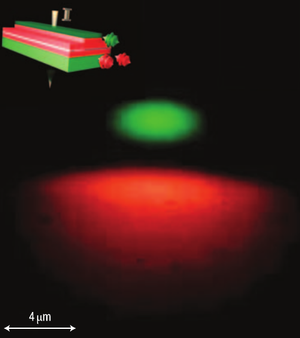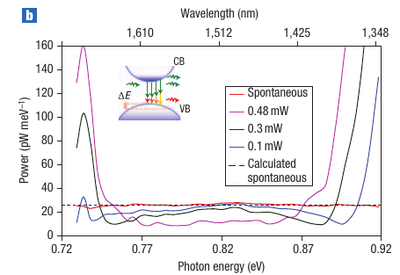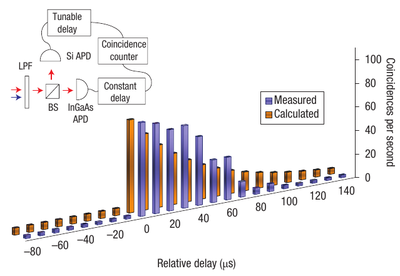Observation of two-photon emission from semiconductors. A. Hayat, P. Ginzburg and M. Orenstein in Nature Photon. 2:256 (2008). What the paper says!?

This important text reports the first observation of a continuous two-photon emission spectrum from a semiconductor. Such an observation was, surprisingly, neglected until this time (2008). It was possible thanks to the high charge-carrier densities one can bring in a semiconductor, making the weak second-order spontaneous processes directly measurable.

This is a quite comprehensive work, studying both optically and electrically pumped systems, stimulating the two-photon emission (TPE) with one photon that triggers the other (an idea we tried with the bundler but did not see any effect) and also performing coincidence measurements. There is also a theoretical modeling. This happens at room temperature. The findings are unequivocal.

The theory is basically perturbation theory, computing matrix element for the second-order process, but it takes into account specificities of the solid-state system, which helps the mechanism thanks to the continuum of delocalized electron states in the conduction and valence bands, enlarging the phase space for the process to take place (and thus be measurable):

They also measure a $g^{(2)}(\tau)$ that supports their conclusions, although they emphasize it's a tricky measurement and they provide the result in a almost a symbolic form:

Their follow-up text[1] gives more detail of related physics.